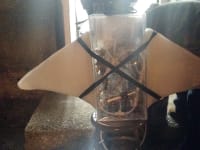The goal of this project was to improve UAV efficiency and safety through use of biomimetic design. This was achieved through the application of a hydraulically actuated soft robotic fin. Drawing inspiration from the manta ray, a custom actuator was developed to achieve a feasible, lifelike locomotion method. The actuator was incorporated into a prototype robot to assess the performance and ease of integration.
Autonomous Underwater Vehicles (AUVs) are plagued with short lifespans or lack a maneuverability. Additionally, mechanical propellers have a long history of injuring or killing marine life. This project seeks to address this through a safer and more efficient means of propulsion.
Using a new actuator technology, Pneumatic Networks, we were able to yield lifelike swimming motion on our prototype. The key to this technology is using two layers of elastic material with embedded channels, separated by an inextensible material. As these channels expand, they are forced to bend. Through careful channel design, a very precise, repeatable motion can be achieved.
Our actuators came in the form of silicone moulded fins. These fins were poured from handcrafted moulds, with 3D printed channel inlays. The inextensible layer was comprised of window screen embedded in silicone which was glued to the fin using additional silicone.
The motion of the robot comes from a hydraulic system. A central pump keeps the system pressurized, while solenoid valves control which side of the actuated fin receives the high pressure fluid. The opposite side is drained to a low pressure line which then feeds to the pump. Using an efficient gear pump and small irrigation valves, the energy draw was less than 7 Watts maximum.
These valves were controlled by an MSP4032 microcontroller, programmed with a digital I/O sequence to alternated the valves. Upon expansion, it was planned to include sequences such as diving, surfacing, turning, and rolling to better explore the oceans.
The robot was capable of housing a host of sensors, however the prototype made use of only two, a pressure sensor and an inertial measurement unit (IMU). The pressure sensor was calibrated to estimate depth. As the hull was not depth hardened, it was important for the robot to monitor its depth. The IMU was used to verify the robot's motion, and would allow for advanced mapping and autonomous roaming in future iterations.
Overall, the project was a successful first step for bringing soft robotics to the world of underwater research. The team yielded 30 degrees of deformation in the fin, proving the design had the range of motion required. Due to failures in the hull, no information was collected on underwater performance to date.
Video
Like this entry?
-
About the Entrant
- Name:Joshua Fuller
- Type of entry:teamTeam members:Gabrielle Franzini, Joshua Fuller, John Price, Nathan Schmidt
- Software used for this entry:Solidworks
- Patent status:none








